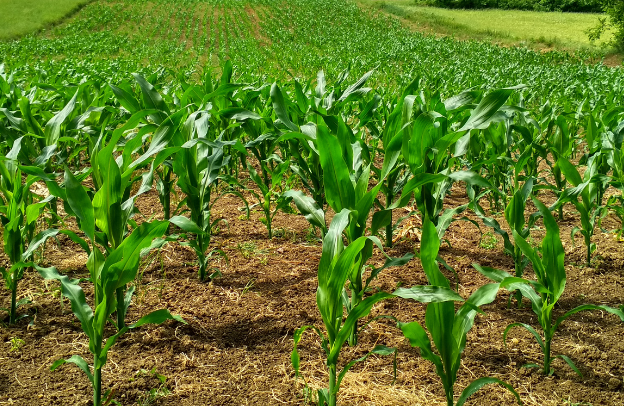Esan Entrepreneurship (The Value Of Handwork)

Skill acquisition has become vitally important for individuals to survive in Nigeria. The constant volatility in prices of goods, poor economy, and lack of job opportunities have nudged Nigerians to seek after different skills to suffice themselves and fetch some money to their pockets, hence the sizzling broadcast for skill acquisition.
Download the first chapter of The Storytelling Series: Beginners’ Guide for Small Businesses & Content Creators by Obehi Ewanfoh.
Many centers have been established for thousands of people to learn a skill and earn a living with it. However, prior to the recent circumstances that prompted the urge to learn skills, Nigerians had already stabilized themselves with different skills and Esans can’t be left out here.
See also Esan Geography And Topography – South of Nigeria
The Esans value handwork, which has aided them in producing crops for consumption and trade and lots of locally made products before the advent of the Europeans. Among these tons of skills, agriculture remains the chief area the Esans are spectacularly good in.
Emphasizing things Esans are incredibly good in? Making clothes, pottery, blacksmithing, sculpting, producing medicine, etc.
Now, let’s dive deep into Esans Handwork.
Agriculture In Esanland
Agriculture has taken root in Esanland before the penetration of the white men in the region. Back in the precolonial days, most Esans depend primarily on cultivation and harvesting crops for sustenance and their staples include yam, tomatoes, Okro, pepper, etc.
They practiced communalism, where the community generally owns and manages all lands. The men weigh the responsibility of farming during deemed- fit seasons and after a general conclusion amongst the men while the women and children provide the crops that would be cultivated.
This practice provided the residents with food for sustenance every year.
Gradually, the Esans began to indulge in commercial activities with the neighboring ethnic groups, particularly the Igbos, known for their business expertise. In the commercial aspects, this entanglement with the Igbos and others incited the knowledge of establishing markets where the merchants could creep in and procure the needed crops and exchange them with their products.
This transaction continued until the coming of the white men. Quite frankly, commercial activities didn’t halt at the advent of European, but it took a turn. Especially on the type of good that was exchanged.
The people traded their gold, cotton, palm fruits and other demanded farm products with the European’s goods, guns, mirrors, and liquor. The interaction and transaction, of course, progressed until the era of the trans-Atlantic slave trade.
Esans Textiles
Through agricultural activities, the Esans procure cotton crops they use to manufacture handmade clothes for different ceremonies in Esanland. Obviously, the Esans textile industry attracted wealth in the land as it prospered beyond imagination.
Right from the early 20th Century (the 1900s), the textile industry started overpowering and attracting people from the Benin kingdom and nearby places. The Esans clothes were valued and are practically in high demand, considering their quality and durability.
It was practically the largest industry during the early 1900s, and women made large income from it.
Esan women occupied and managed the textile industry, from processing the cotton to weaving and dyeing the fabric in different colors and materials.
The Esans cloth was so popular and valuable that the European put it in a European exhibition for others to admire. The wealth generated in the textile industry helped to fund the Esan army.
In addition, the wealth aided in building the foundation of all the areas known today as Lagos state. During those days, the industry was named “Akiolu”, the name of the current Oba of Lagos state. This proves the Esan textile industry’s impact in building the present-day Eko/Lagos.
However, the clothes (Igbulu) made by the Esan women varied in price and use. Although the Esans textile industry doesn’t power today as it was in the 20th Century, the locals still pursue making their traditional clothes, usually won by all at any festival such as the new yam festival.
Esan Arts
Though Benin’s artworks have shadowed Esan arts in terms of popularity, most artworks the Europeans smuggled to their countries and exhibited at their museum are Esans artworks. Esans are very dexterous when it comes to matters of art.
Just as the women dominate the textile industry in Esanland, they are also adept in sculpting, knitting mats, making baskets, and all.
The woman makes mats known as Ewa and places them on sale. In the precolonial days, these mats are usually sprawled on the floor for kids to lay on. They use it to clothe the molded bed (usually made with mud) for relaxation.
Also, the Onojie’s mud-molded throne (ojiukbuo) is adorned with the mat (Ewa), even to this day. Aside from making mats, the women also knit baskets using their domestic knife (Elo) to peel, splinter and scrape the palm trees’ leaves in order to make the basket. These locally made baskets are still made and utilized by many today.
In addition, the women specialize in making pottery molded with clay mud. Although, only a few Esan communities have a forte in this area. Hence those communities that specialized in pottery molds and distributes them to their counterparts. Presently the use of earthenware has declined; nevertheless, it’s one of the Esans handworks.
Unlike cloth weaving, mat making, and basket making that Esan women shoulder, leatherworks are exclusive to Esan men.
Esan men produce different leather works using the hides and skin of animals like antelope, cow, deer, crocodiles, and snakes to create fine artworks such as Azuzu (a small ceremonial handheld fan) used mainly by those with chieftaincy titles, flywhisks (Ijiakpa), leather flip-flops, bags, caps and all.
You might like to also see Religion And Spirituality Among The Esan People of Nigeria
Basically, Esan men procure these animals’ skins from hunters, and butchers that sell them at the market or pare the animals themselves.
The Esans also have good sculptural prowess. In this case, both men and women specialize in this area. The Esan sculptures are made of mud or wood made into men and women forms.
These sculptures are made for different purposes; it’s used to decorate the compounds and facade of the Esan wealthy men as it dictates their riches and piles up their prestige. It is also used to venerate deities and secure a family’s welfare.
They are also adept in wood carving art. In Esanland, the wood carvers (Onewna) are majorly men and design different objects such as chairs(aga), boxes (Ekpeti), mortars (Uro), etc., and also help in designing a newly built house.
In Esanland, the wood cavers’ services are always in high demand considering what they produce. This wood carving is still a highly sought-after skill by the youths.
Even though most Esans pursue their education to covet white-collar jobs, they still have the zeal to learn basic skills.
Conclusion
The Esans have identified trade, craft, and technical skills as necessary for their future development. The emergence of medium and large-sized enterprises is due to the availability of skilled personnel in these areas following educational development.
Esans promotes long-term healthy growth through better education involving vocational education to enable Esan youths to gain skills to start their own business.
Written by Juliet Emmanuel for African Docs Project.
Download the first chapter of The Storytelling Series: Beginners’ Guide for Small Businesses & Content Creators by Obehi Ewanfoh.







3 Comments